Discover the architectural, historical and traditional richness;
singular and surprising aspects of the village and its surroundings ...
St Laurent’s first sedentary inhabitants settled there at the beginning of the XIth c., they had been called upon by the monks of the Abbaye to cultivate their lands. They would give them the crops and in return they were allowed to hunt, to fish, to put the cattle to graze in the marshes and on the land. In the XVIth c. religious wars changed drastically the inhabitants’ lives. In 1562 there was a majority of Protestants in the village. In 1870, le "phylloxera" (insects eating up the roots of the vineyards) devastated all the vineyards. To put an end to this disease, every vineyard was replanted and immerged in water. In those days, farmers started planting lots of immense vineyards in the sandy parts of that area; - dunes were levelled – thus bringing prosperity to the region. Today lots of vineyards have been uprooted, but some vineyards still exist producing good wines such as "le Vin des Sables". At 6 kms away from St Laurent d’Aigouze, on the former Aigues-Mortes road, an imposing square tower looms up in the marshes, it was built according to the will of Louis IX called ST Louis as well as Aigues-Mortes' walls In the XIIIth century this tower was an outpost to the " tour de CONSTANCE". The marks left in the fireplace situated on the 1st floor of the tower show that soldiers were permanently stationed there to see if any invaders were approaching. That tower was the only way to go by land to Aigues-Mortes and to the salt marshes. The abbots of Psalmodi, Psalmodi is the name of the Abbaye, had imposed a toll to go through it. On the ground floor you can admire ogive ceilings. Nowadays the abbots of Psalmodi would be surprised to see that the tower has become an observatory with an amazing view on the whole region: from "Mont Ventoux” to " Le Pic –St-Loup ". This peaceful area has become the kingdom of tufted herons, grey herons, marsh hens, ducks, nutrias and many other different species. There, you can see bulls and horses grazing quietly. Tour Carbonnière – Ancienne route d’Aigues-Mortes Free admission and trail in the surrounding marshes Gradually, the Camargue “bouvine” (Camargue bull traditions) becoming formalized and codified, arenas were built at the beginning of the 20th century for some, in the 1930s or 1950s for others. Their location in the heart of the village, the irregular shape of their track, the shade of the plane trees, the proximity of cafes make this place dedicated to camarguaise races and a place of social exchanges… The toril “bull pen” and the presidency are attached and integrated into the Catholic church, the toril is attached to the Sacristy. This design is extremely rare, unique in Europe. The toril, the ground of the place and the barriers delimiting the track were registered on the Supplementary Inventory of Historical Monuments in 1993, considering that the arenas of St-Laurent d'Aigouze are of sufficient ethnological interest to make their preservation desirable because of the place they occupy in the cultural tradition of “bouvine” in Bas-Languedoc. Residents and visitors benefit from the qualities of this space for events and shows scheduled throughout the year but more particularly in the summer seasons. They have a capacity of over 1100 people. Around the arenas, a permanent open air exhibition, unique and educational on the theme of “bouvine”, inaugurated on May 20, 2011. This open air museum aims to promote the Camargue culture, traditions and famous characters. Its realization is the fruit of a partnership with François Fontes, architect in charge of the rehabilitation of the arenas in 2008 and a close collaboration with the French Federation of the Camargue Race. It w - The apse in the XVIth Century. The architect Davilier built the last two elements of the church. In 1703 it was burnt by "les Camisards" (revolted protestants) Actually consolidation works need to be done. When looking at the bull-ring you can see the "toril" leaning against the sacristy. It was built by Ludovic Trouchaud. Such a construction is unique in Europe and is listed a historic monument. Information 04.66.53.35.36 In order to replace the old crumbling down temple, too small to contain the large protestant community, a project was conceived and approved on February 14th 1803, 25 000 francs were given by the state to confirm it, that sum was largely completed by the protestants. This building, whose neo-classical front is very popular in the region, is composed of a one vesselled nave and a semi-circular apse. Outside the walls have been enforced with buttresses, the windows have been set in between each buttress. United Protestant Church of France This fort, just a few miles away from Aigues-Mortes but on Saint-Laurent d’Aigouze territory, is rich with history. According to a legend the word "Peccais» would derive from “Peccatius", the name of a roman engineer who invented the first techniques to exploit salt. During the last two millenniums, huge quantities of salt were extracted from Peccais and all the other surrounding salt marshes. In 1598 that famous fort was built in order to protect the salt marshes and the canals where the so precious salt used to be transported. It also helped fight against the pirates that came from the sea to plunder "la Camargue ". Lots of fights took place to possess the fort especially during the religious wars. It was re-built in 163O and later on made bigger. It looks like one of Vauban's forts. Pedestrian/cycling path to the site (10km), however, access to the Fort is closed to the public for security and conservation reasons, vestiges awaiting enhancement and observable from the pedestrian path with lectern explaining the history of the fort. Tourist Office Information - 04.66.77.22.31 The warmth of its stones, typical of the region and the peaceful atmosphere of the place, make it an exceptional site. It exists since the 14th century, it belonged to the counts of Toulouse, then to the abbots of Psalmodi. The Calvières family gave it its name. Parts of the house, orangery, park, elevation and interior decor have been listed as Historic Monuments since April 9, 2001 With its original fireplaces, its French ceilings, its vaults and its luminosity, it transports you to an enchanting universe, full of history and mysteries. Extract from the Midi Libre newspaper, Monday January 20, 2020: A new TV series filmed at the Château de Saint-Laurent-d´Aigouze - by Kathy Hanin "We arrived in Saint-Laurent d'Aigouze by chance after weeks of research in the region and we found a magical place, the Château de Calvières, in the heart of an authentic village. L'Occitanie county is a bit like the new Hollywood ", enthuses Jean-Philippe Avenel, production director of Telsète who will shoot a new TV series there in April," 26-minute episodes, which will be broadcast this summer 2020”. 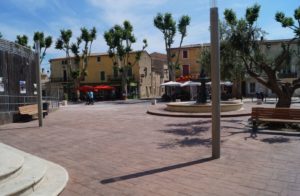 The village was founded by Wisigoths migrating from Northern Italy to Spain and so going through Languedoc in the Vth century. Many priests went across that region in order to convert its people. St Laurent d’Aigouze didn't own any lands until the XVIIIth century; they all belonged to Psalmodi Abbaye.
The village was founded by Wisigoths migrating from Northern Italy to Spain and so going through Languedoc in the Vth century. Many priests went across that region in order to convert its people. St Laurent d’Aigouze didn't own any lands until the XVIIIth century; they all belonged to Psalmodi Abbaye.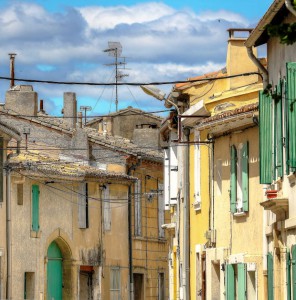
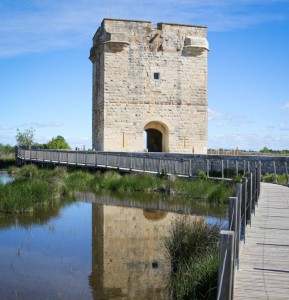
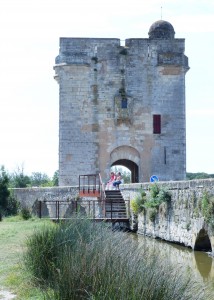
Open all year, daily 24/24
Tourist Office Information - 04.66.77.22.31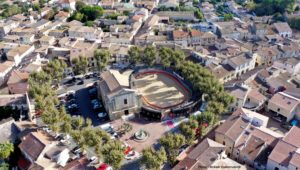 This is where the carts of the villagers were once assembled and placed end to end, thus delimiting a makeshift track, like arena, in which amateur bulls and raseteurs played.
This is where the carts of the villagers were once assembled and placed end to end, thus delimiting a makeshift track, like arena, in which amateur bulls and raseteurs played.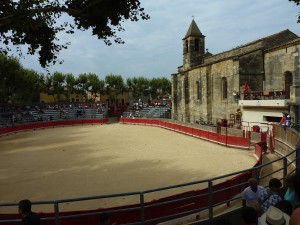
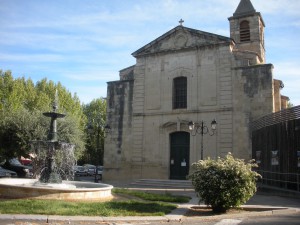 as both damaged by the long religious wars between Catholics and Protestants and by time. What exists now is the result of works done over three different periods:
as both damaged by the long religious wars between Catholics and Protestants and by time. What exists now is the result of works done over three different periods:
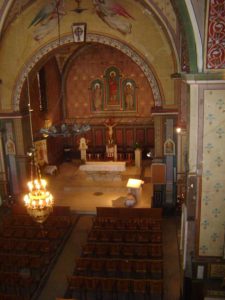
email: catholiques.en.psalmodi@orange.fr
Current restoring of the church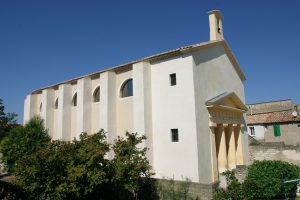
Information - The Pastor- 04.67.50.72.76
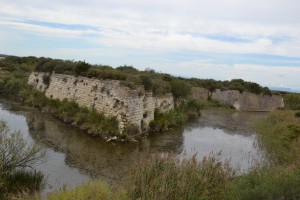
 The Château de Calvières is private, but through the entrance gate, located on Boulevard Alexandra David-Néel, you can see the magnificent park, mainly wooded in the 19th century, which is home to many rare Mediterranean species. Nestled in the center of the village, the Castle has survived the centuries and reveals its charms at first sight.
The Château de Calvières is private, but through the entrance gate, located on Boulevard Alexandra David-Néel, you can see the magnificent park, mainly wooded in the 19th century, which is home to many rare Mediterranean species. Nestled in the center of the village, the Castle has survived the centuries and reveals its charms at first sight.



